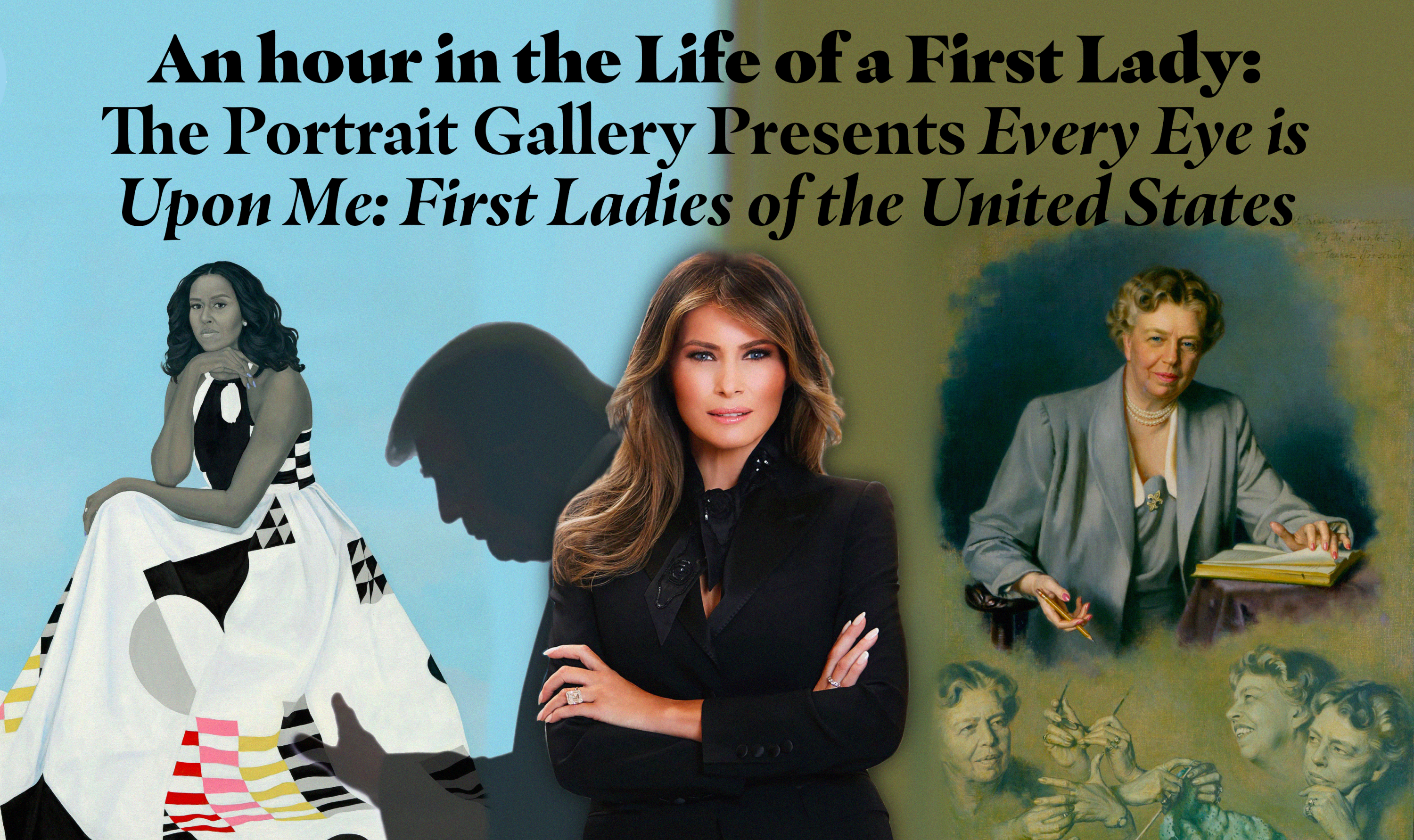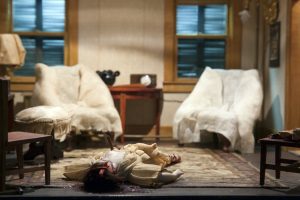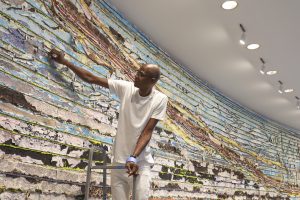“A woman is like a tea bag; you never know how strong it is until it’s in hot water.”
-Eleanor Roosevelt
As the longest serving First Lady of the United States, Eleanor Roosevelt spent much of her time in and out the White House working tirelessly to improve the lives of Americans. Diligently aiding her husband, Franklin Delano Roosevelt, after he was paralyzed from contracting polio, Mrs. Roosevelt carried out the duties of the White House for both herself and her husband in his later years. She represents how influential and critical these women have been to the country’s political history, leading us through difficult eras just as much as the officeholders beside them. A First Lady’s job extends far beyond picking out china—they have been instrumental to the president’s ability to succeed politically and culturally from the Oval Office.
Every Eye is Upon Me: First Ladies of the United States consolidates portraits of the First Ladies into one beautifully articulated exhibit. From Martha Washington to the newest addition, Melania Trump, this exhibit successfully tells the stories of the over 47 First Ladies of the United States. Even more plentiful than the adjunct exhibition of presidential portraits (as the concept of the First Lady can extend to daughters, nieces, etc.), Every Eye is Upon Me illustrates the evolution of the First Ladies of the United States through an ever-changing stylistic choice in portraiture and fashion. The portraits are effectively accompanied by interesting facts about the sitters’ influence on the White House, making this exhibit not only pleasing to the eye but also a very edifying experience.
Set up in chronological order, Every Eye is Upon Me begins with a grand portrait of Martha Washington. As the first First Lady of the United States, many traditions that are still in use today are owed to Mrs. Washington. Though she did not provide care for the White House we know today, as it was not yet built, Mrs. Washington supported her husband as he led America’s fight for independence against the British.
Mrs. Washington, like many later First Ladies, is adorned with a black lace frock. Many of these portraits were painted after their presidents had died, and thus, like Mrs. Washington, the sitters were often widowers. The stoic expression across widowed Mrs. Washington’s face is captured masterfully in the gallery’s portrait.
Following Martha Washington is a portrait of Abigail Adams. Known for her request of her husband to “not forget the ladies,” Abigail Adams is painted in a very elegant manner adorned with many fashionable fabrics and patterns. In a contrast to Martha Washington’s black frock, Abigail Adams exudes a sensible, yet globalized, interest in fashion. This sets up a pattern that can be traced through many other portraits in the exhibit: First Ladies as tastemakers and trendsetters for American women. A few walls over is the portrait of Louisa Adams, First Lady to John Quincy Adams and daughter-in-law of Abigail. As the first foreign-born First Lady (and the only one until Melania Trump), her British elegance and demeanor are clearly communicated in her portrait. The rich reds and velvet textures painted in her portrait are rather unique to her.
One striking aspect of the exhibit is that the First Ladies appear representative of the country they serve. As one physically progresses through the exhibit, America, too, progresses through bouts of economic despair, which is made clear by the contrast between different First Ladies portraits. For instance, there is a stark difference between Louisa Adam’s luxurious extravagance and the simple photograph of Lou Henry Hoover, who was First Lady during the beginning of the Great Depression. Her portrait does not fail to evoke the sense of despair that was rippling through the United States at the time. The simple black and white tonal range as well as her bare frock signal the hopelessness of the time.
Weaving through the rooms full of portraits of varying sizes, mediums, and styles, reveals just how many First Ladies of the United States there have been. Initially considered “White House hostesses,” many daughters, nieces, and sisters of Presidents have assumed the role of hostess when there has been no wife to do so. For instance, Jane Harrison served as White House hostess for her father-in-law, William Henry Harrison. The portrait of Mrs. Harrison in the exhibit celebrates her second marriage (after William Henry Harrison Jr. had died). Although her job as hostess was short-lived, many accounts rave over her parties and hosting abilities.
Scattered throughout the exhibit are articles of clothing owned by the First Ladies. There is a collar belonging to Mary Todd Lincoln, as well as a few dresses belonging to contemporary First Ladies such as Nancy Reagan and Michelle Obama, whose dress on display is the exact one worn in her portrait. Made from cotton, the material as well as the pattern on the dress is an homage to plantation agriculture and historical African American quilting.
The portrait of Mrs. Obama is perhaps one of the most eye-catching parts of the exhibit. Not only epic in size, the portrait itself wows viewers with its intense colors and captivating meaning. The artist, Amy Sherald, uses grey for Mrs. Obama’s skin tone in an effort to subvert the grand portraiture of the earlier First Ladies’s portraits. The gray tones reference photographic mediums which offered African Americans throughout history the means to depict themselves unlike the selectively opulent nature of grand portraiture. Instead of mimicking the portraits of First Ladies past, Mrs. Obama’s portrait highlights her complexity and strength from the inside out.
Signifying a change in approach, Melania Trump’s portrait hangs on the wall diagonally opposite from Michelle Obama’s monumental one. Much smaller in scale, this portrait is a simple photograph of the First Lady, whose face is seemingly airbrushed to perfection. The small size and simplistic style perhaps coincide with the current First Lady’s impact on the White House.
Every Eye is Upon Me: First Ladies of the United States is great for a family outing (or online viewing) and a must-see for all. The polarity of the style, fashion, and emotion in each of the portraits speaks to an overall shift in the role of First Ladies throughout the last three centuries in America. Although at first these women were expected to be just hostesses for the White House, over the centuries, and through the work of women like Eleanor Roosevelt, First Ladies have become a crucial part of the president’s ability to complete his—or, perhaps someday soon, her—agenda for the American people. Every Eye is Upon Me perfectly conveys the importance of First Ladies in the success of the executive branch throughout history, while highlighting the individual accomplishments of each woman.
Every Eye is Upon Me: First Ladies of the United States is open now through May 23, 2021 at the Smithsonian’s Portrait Gallery in Washington DC.




